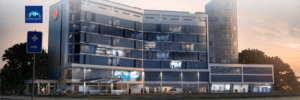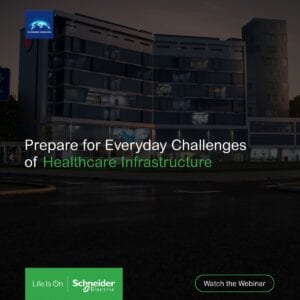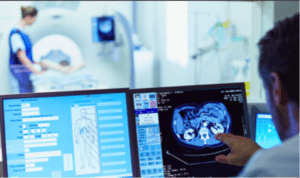
In the webinar Preparing for Everyday Challenges of Healthcare Infrastructure by Schneider Electric, we brought together healthcare professionals and industry experts across the country in a way that could bring some light to the future of the industry.
It was an absolute pleasure talking to some of the country’s leading healthcare professionals on the extraordinary vectors of the industry and how they tackled the rising challenges during the pandemic.
The unanticipated circumstances of last year put into perspective the countless challenges faced by healthcare professionals. The multitude of issues sparked a conversation among industry experts on the future of healthcare.
Healthcare being a highly regulated sector, demands integrated technologies, infrastructure, and services that come in handy so that the professionals can deliver the best healthcare has to offer. Setting these factors in context, the esteemed speakers who participated in the webinar shared insights on making every day extraordinary for the future of healthcare infrastructures.
Ensuring Business Continuity
When the pandemic hit, there was a visible increase in the amount of pressure the healthcare professionals and the industry, on the whole, faced. With the cases reaching an all-time high, ensuring continuity was extremely important.
When asked about the specific challenges that rose and how continuous operations were maintained, Dr Mudit Saxena, Managing Director of Ovum Hospitals, imparted essential insights, delving into the details on ensuring operational and business continuity at hospitals.
The multiplying cases and the physical restrictions called for digital integration across all systems in healthcare and the continuity of service had to be prioritized. For this, a swift adaptation to digital systems was made, where the professionals utilized the digital tools available to consult patients online when circumstances deemed it right. Everything from mobilizing to data storage, transport and home deliveries of medicines were powered through technology keeping operations intact and continuous.
Exercising Intelligent practices and using the tools available pave the way for a future-ready healthcare system that is prepared for such situations at all costs. This was particularly an interesting and important conversation to have, now that there is a looming question on how prepared are the healthcare systems if and when another disaster strikes.
Technology Enabling Resilient and Ready Healthcare Infrastructure
For safe and reliable delivery of patient care, smooth building operation is essential. With IoT and digital transformation being the emerging trends in the industry, how hospital infrastructures can be made more resilient with these tools is a major talk point.
The panel proved helpful in enlightening us on how the digitization of facility infrastructure systems is yielding a smarter strategy for asset protection. This enables healthcare professionals to be more confident than ever that both the power and infrastructure they need will be available on demand.
From the perspective of a solution provider, EcoStruxre ™ for Healthcare has been providing plausible solutions to uncovering efficiency savings while delivering safety, reliability and comfort. Moreover, the “data chaos” that Mr. Sanjay Sudhakaran, Vice President, Digital Energy from Schneider Electric accurately pointed out, can be well organized with an in-depth support platform.
Leveraging predictive energy management technology to automate resources can set the standards for any future disruptions caused to the system and act proactively solutions rather than reacting to these disruptions.
With such instinctive solutions, hospitals can collect vast amounts of data so that software management systems can predictively respond to, maintain, and protect the infrastructure, thereby saving both assets and lives.
Ensuring Healthcare Equipment Reliability
Hospital equipment resilience has to be ensured where proactive monitoring of management system components and condition-based preventive asset maintenance is employed to preemptively address issues that might otherwise put their operations at risk, disrupt continuity or reduce the life span of assets and raise the total cost of ownership. More hospitals pursuing resilience are moving to such predictive software support to further enhance operations and preserve equipment.
Using bio-medical applications or asset management systems is a tried and tested method of maintaining all hospital equipment in an integrated manner. From equipment availability to transparency, a complete and thorough process can be established with such maintenance platforms.
An approach that reduces unnecessary maintenance on systems that are currently performing at acceptable levels, as well as time previously spent on calendar-based checks can be put in place with condition-based asset management systems.
The panel truly unlocked a holistic approach to prepare the healthcare industry for the upcoming challenges by analyzing the methods that did work when the industry was hit with an unexpected crisis. Moreover, it was a great learning experience having different industry professionals providing key perspectives on making healthcare extraordinary on a daily basis.




